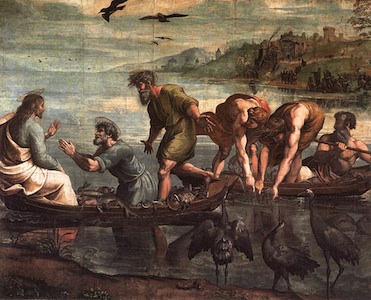 Si tienes unas perras y quieres invertir en libros electrónicos, aquí tienes unas cuantas tentaciones. - JoBi Si tienes unas perras y quieres invertir en libros electrónicos, aquí tienes unas cuantas tentaciones. - JoBi |

Figure Drawing EbooksThe School of Raphaelor The Student's Guide to
|
Learn How to Draw Perspective
Purchase the ebook by clicking the "Buy Now" button at the bottom of the page.
After completing the purchase you will be directed to a web page which will give you a link to the download site.

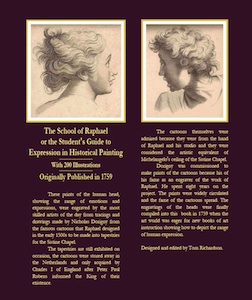
A printed version is available at Amazon.com
Or view more of the available books at Figure-Drawings.com's Author Page
Get it direct - and maybe a little faster - at CreateSpace.com
Preview the book at Google Books.
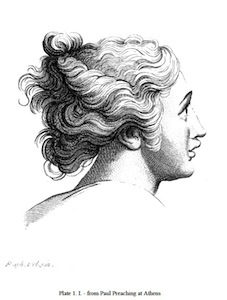
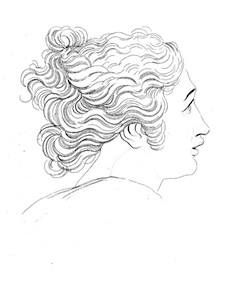
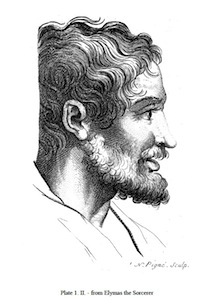
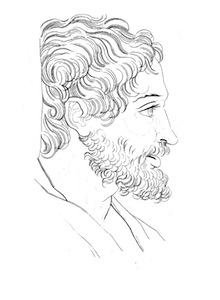

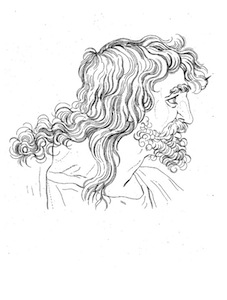
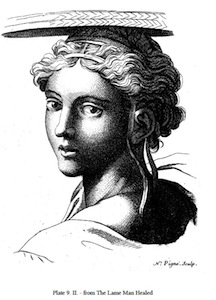
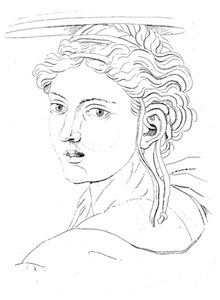

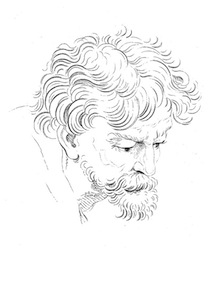
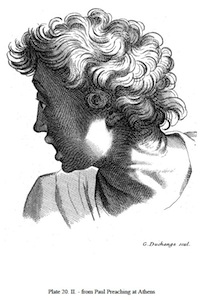

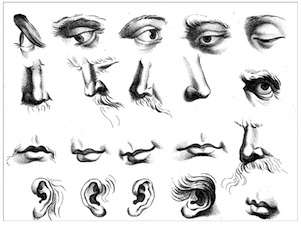
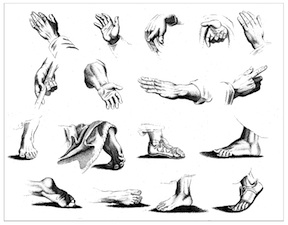
|
THE SCHOOL OF RAPHAEL This book was the published to demonstrate the range of human expression. This was a popular study in the eighteenth century. In the seventeenth century Charles LeBrun published his Methode pour apprendre a dessiner les passions. This was becoming outdated because of the new interest in classicism. Benjamin Ralph published this book which was based on tracings, and drawings of Nicholas Dorigny and the engravings made of them by a number of accomplished French engravers working under his direction of the famous cartons that Raphael made to be manufactured into tapestries for the Sistine Chapel.
Dorigny was chosen to produce engravings of the cartoons which were in the possession of the King of England because of his fame in reproducing the works of Raphael in Rome. An example is shown above, The Marriage of Cupid and Psyche, after Raphael da Urbino. 
The original book is an oversized book with a total of 90 large prints. half of them are fully rendered, shaded engravings, the other half are engravings of the original tracings and drawings showing where shadows and high lights will be placed. For this edition I have divided the prints in half when scanning them and placed them on opposite pages so they can be reproduced full size and as closely as possible to their original appearance. This edition is scanned from a second edition which included not only the outline drawings, but also some lessons in drawing, how to draw the head, how to draw the features of the head, how to draw hands and feet, and legs and arms, plus anatomy, and excamples of classic sculpture. All of these engravings are included as well. The modern artist will not only enjoy the beautifully executed engravings, but will learn a lot about drawing the human face because these works were Raphael's finest. The cartoons were made in a relatively short time in his studio but students of the work say that the faces are undoubtedly Raphael's own. Raphael knew that he was in a kind of competition with Michelangelo, and that the tapestries would be exhibited with Michelangelo's famous ceiling of he Sistine Chapel.
CONTENTS See below for a list of Illutrations From my Introduction The School of Raphael, or the Student's Guide to Expression in Historical Painting by Nicholas Dorigny with commentary by Benjamin Ralph might be the most beautiful art instruction book ever published. Admiration for the beauty and skill of Raphael's drawing was certainly the reason to make the prints, and though Mr. Ralph acknowledges the beauty of the engravings and the drawings they were based on, that was not his only reason for making the book. Jennifer Montagu in her book, argues that while the art world was influenced by Charles LeBrun's Méthode pour Apprende à Dessiner les Passions, it increasingly criticised his work as mannered. Styles of art were undergoing a change and the new taste admired neo-classic ideals. The study of expression continued to be regarded as a primary component of art education so a new source of examples was sought. Benjamin Ralph turned to Raphael Sanzio d'Urbino (1483-1520) as a source and used the prints made from tracings and drawings by Nicholas Dorigny of Raphael's cartoons which were commissioned by Pope Leo X for tapestries for the Sistine Chapel and the Vatican Palace. The tapestries still hang on special occasions beneath Michaelangelo's famous ceiling. The cartoons were greatly admired in the 18th century because they were original works from his studio and reproductions of them were available in prints. Raphael completed ten cartoons of an original order for sixteen. Only seven survive. The cartoons were completed in 1516 and sent off to be rendered as tapestries. About 1630 Peter Paul Rubens informed Charles I of the cartoons and they were acquired at considerable espense. The cartoons are now at the Victoria and Albert Museum, London. The majority of the cartoons were in the Netherlands "but in 1630, through the mediation of Rubens, they were sold to England, where they were regarded as Raphael's most valuable creations. Jonathon Richardson published his Essay on the Theory of Painting around this time also. He called the cartoons "the greatest achievement of the Roman School." Nicholas Dorigny (1658-1746) was from a famous French artistic family. He was trained by his father Michael and worked mainly as an engraver. He continued his studies in Rome and stayed there 28 years where he made his name making engravings of Italian works of art especially the works of Raphael (whose reputation rivaled Michaelangelo's among art enthusiasts of the time) including a well received portfolio of prints of Raphael's frescoes of the Wedding of Psyche and Cupid in the Villa Farnesina in Rome. In Rome he became know to "several Englishmen of rank, who persuaded him to come to England, and engrave the cartoons. He arrived in June 1711, but did not begin his drawings till the Easter following, the intervening time being spent in raising a fund for his work. At first it was proposed that the plates should be engraved at the Queen's expense and to be given as presents to the nobility, foreign princes and ministers. Lord Treasurer Oxford was much his friend: but Dorigny demanding 4,000? or 5,000? put a stop to that plan; yet the queen gave him an apartment, at Hampton Court, with necessary perquisites." The work proceeded on a subscription basis. Dorigny soon was overwhelmed and sent to Paris for assistants, among them Charles Dupuis. Dorigny presented the engravings to King George I in April of 1719. He was knighted in 1719 shortly after their completion. He retired to France in 1924. His collection of drawings had been sold in 1723. Among the drawings were a hundred and four heads, hands and feet, traced from the cartoons. The heads were afterwards engraved by various French artists and published by John Boydell as The School of Raphael, or the Student's Guide to Expression in Historical Painting" in 1759. The images reproduced here are from a later 1782 edition which included more illustrations than the original, namely the outline prints of the heads and the 12 plates illustrating the principles of geometry, hands, arms and legs and the plates after Albinus and the Torso of Michelangelo, Apollo, Venus, and Hercules. The additional studies were by John Boydell and the book published under the title The School of Raphael, or the Student's Guide to Expression in Historical Painting: illustrated by Duchange and others, under the inspection of Sir Nicholas Dorigny, from his own drawings after the most celebrated Heads in the Cartoons at the King's Palace according to the Penny Cyclopedia of the Society for the Diffusion of Useful Knowledge. |
DOWNLOAD THE E-BOOK The School of Raphael - 248 pages, with 200 illustrations. Beautiful engravings of the expressions of humans engraved from the famous cartoons of Raphael. $14.95
|
DOWNLOAD THE E-BOOK Buy now with Paypal. If you are new to PayPal you will be directed to a PayPal sign up page or you will be allowed to pay directly by credit card. |
|
LIST OF ILLUSTRATIONS |
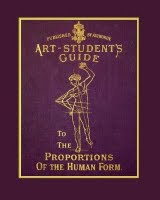 The Sculptor and Art Student's Guide to the Proportions of the Human Form By Dr. Johann Gottfried Schadow $14.95 |
 The Art Student's Guide to the Bones and Muscles of the Human Body By Dr. Johann Gottfried Schadow $14.95 |
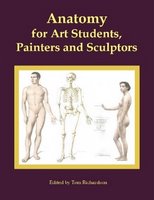 Anatomy for Artists Painters and Sculptors by Dr. Julien Fau $14.95 |
You will need Adobe Acrobat Reader (c) to view the PDF file.
If you do not have a copy of Adobe Acrobat Reader you may download a free copy of the latest version here:
Acrobat Reader Download Site
If you experience any trouble downloading the e-book please click on this link: Detailed Download Instructions
If you are still experiencing trouble email me at:lifedraw2008@gmail.com and I will contact you to help with the download or email you the file.
This new edition is copyright 2010, the original images in it are believed to be in the public domain based on their age and publishing date. If you have information to the contrary please email me: lifedraw2008@gmail.com

